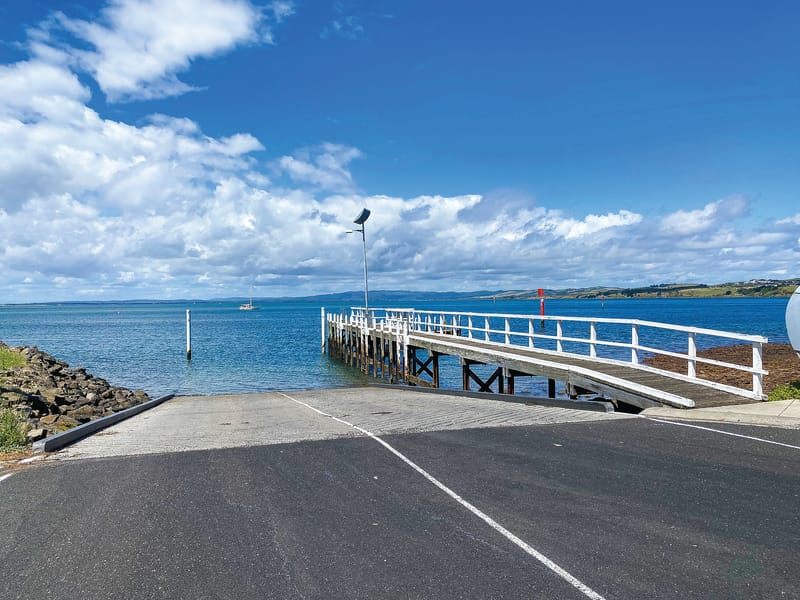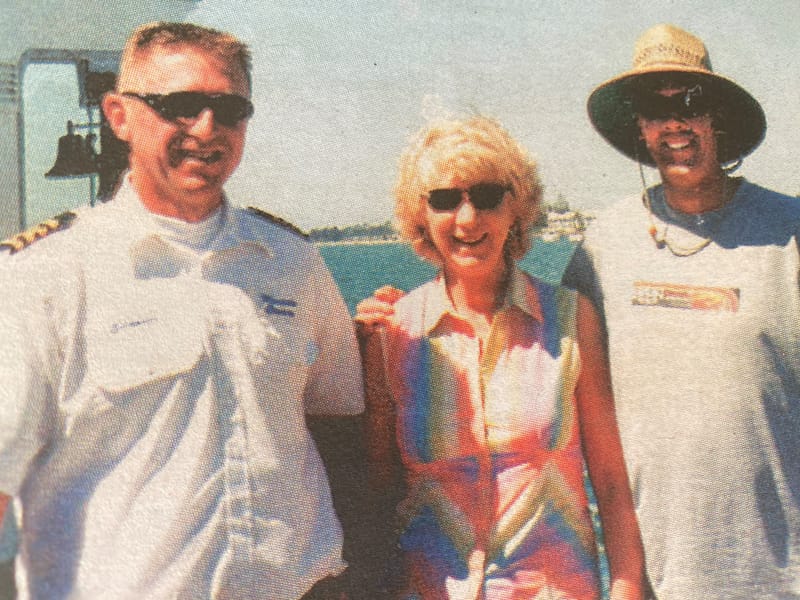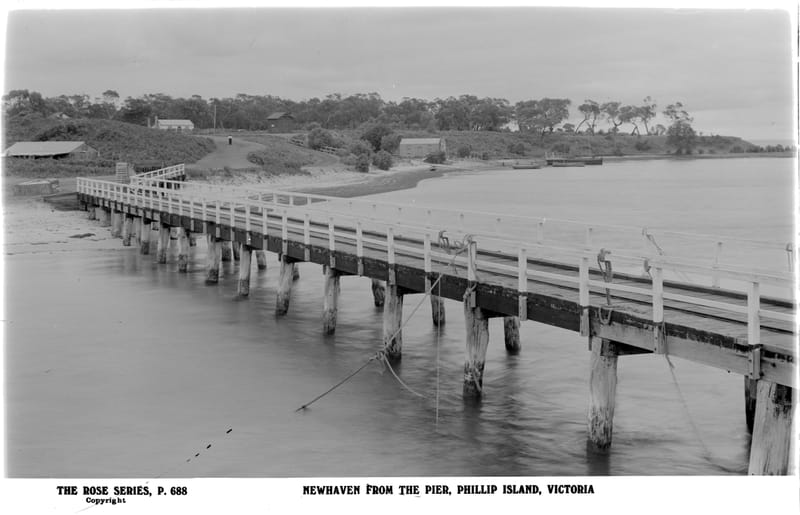A fishing family
Newhaven – early days of the fishing industry By Jan Daff, a grand daughter of boat builder Harry Crole Walter Henry Crole, known to all as Harry, moved to Newhaven from the Tarwin region, in 1918 just after the end of the First World War. He had...
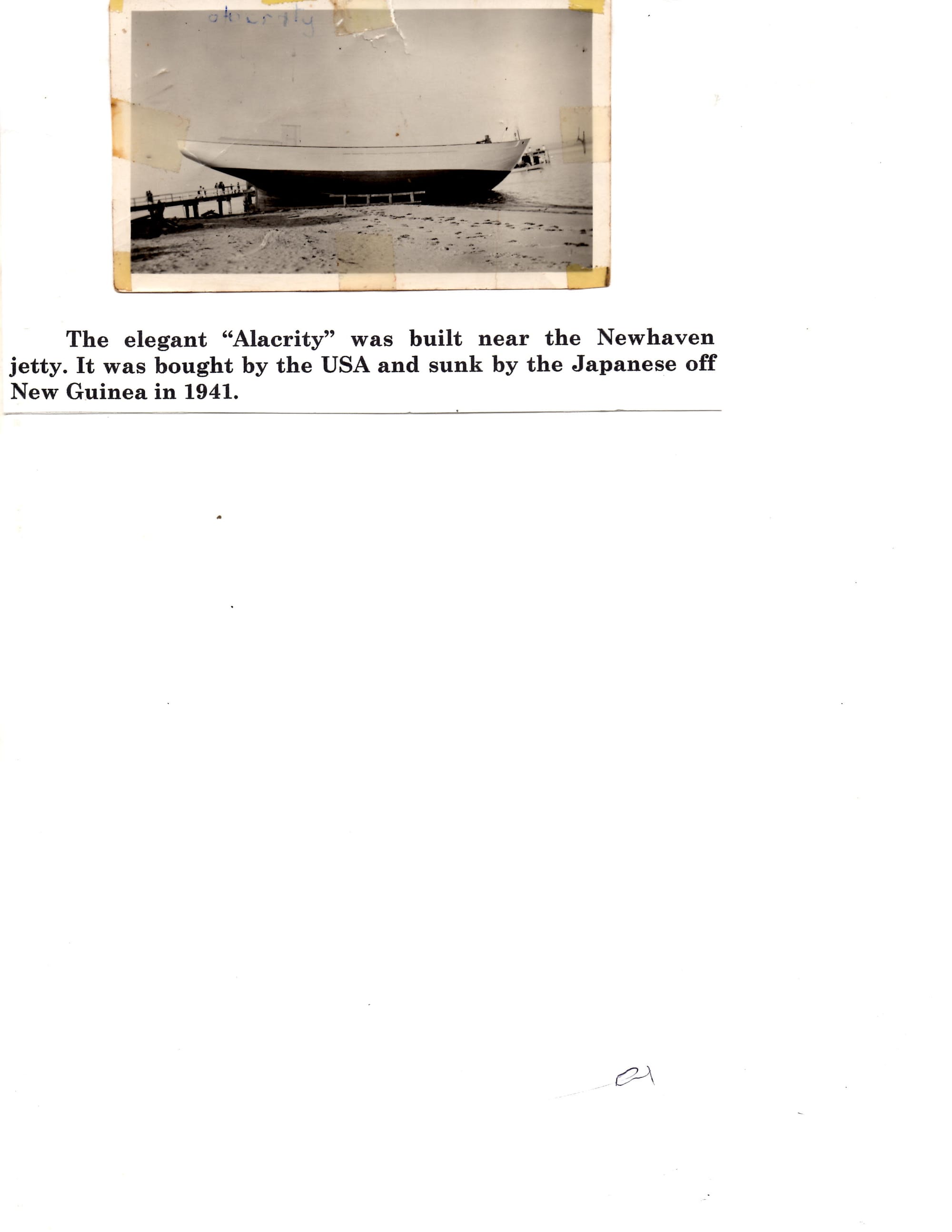
Newhaven – early days of the fishing industry
By Jan Daff, a grand daughter of boat builder Harry Crole
Walter Henry Crole, known to all as Harry, moved to Newhaven from the Tarwin region, in 1918 just after the end of the First World War.
He had studied under George Brooks, an English architect and had engaged initially in ship-building elsewhere.
At the age of 28 he visited the coastal village of Newhaven.
Harry saw Newhaven as an idyllic place and began his boat building business there.
He acquired land on the corner of Forrest Avenue and Anderson Street, built a home and proceeded to build his first boat – the “Progress”.
In 1913 Harry married Florence Mears (known as Florrie) and the couple had five children – Vaughan, Ilma, Sydney, Mervyn and Audrey.
The back yard of their family home then became the site for the construction of many very sturdy and sea worthy fishing vessels.
His first sizeable effort was the 42 foot fishing boat “Nautilus” which was built for his brother-in-law Allan Mears.
Alan mainly fished for crayfish around Wilsons Prom.
This was followed by the fishing ketch the 45 foot “Flinders” (also known as the Blue boat) which he built for his oldest son Vaughan.
Vaughan was known to be a fearless and skilful seaman.
Along with his crew including Johnny Farley, the son of Arthur Farley, and Tom Davis, Vaughan was amongst the first shark fisherman to fish the waters of Bass Strait and the Tasmanian Islands.
A tragedy
Harry’s family home was to house both the Crole and the Farley family, following the tragic death in 1933 of Arthur Farley in the Newhaven channel.
Arthur, aged 45, was crossing the channel in a sailing boat from San Remo, when he was struck by a boom which had swung across, and was knocked into the water.
He apparently saw the danger, for he warned C Newman and a woman in the boat with him.
But it was too late to save himself.
When picked up a few minutes later by Victor Nunn, who was in charge of another boat, Arthur Farley was dead.
It was not known whether he was killed by the blow from the boom, or was drowned.
Just 12 months prior to the tragedy, Arthur had a narrow escape in a squall in which three other fishermen drowned.
On that occasion, Farley’s boat was with others, caught in a squall while fishing off Cape Woolamai.
His boat was disabled and drifting about all night.
Farley was rescued in the morning in a state of collapse.
(Arthur is buried in the San Remo cemetery, and his death is recorded on the San Remo monument to the fishermen who have lost their lives at sea.)
Harry Crole could see the plight Mrs Farley faced raising three young children, John, Maude and William; there was no bread winner – and no Government assistance in those days.
So a bungalow was erected on the northern end of the large shed for the family.
In time, money from the annual couta boat community event was donated for the construction of a home.
Harry donated part of his own land for this purpose.
At one stage the Newhaven Post Office operated from the Farley home, which was on the site at the entrance to the bridge where “Dutchies” currently stands.
Winters at the Prom
Prior to World War 2 the entire Crole family, along with Mrs Farley and her three children, spent many winters at Wilsons Promontory.
Fishing out of San Remo in the winter months was not ideal.
It was easier and much quicker to take the fish and crayfish to Port Welshpool than to battle the elements and bring them back to San Remo, with Bass Strait a wild and dangerous body of water.
So Harry decided to move the family to the sheltered Refuge Cove on the eastern side of the Promontory during the winter months.
The men went down prior to the start of winter with a load of corrugated iron and timber and built a couple of big huts as well as erecting two or three good strong tents.
Word goes that there was always a two gallon pot of “wallaby tail soup” hanging on a hook over the big open camp fire and apparently the wallaby hind quarter made a good steak!
Johnny Farley, who now lives in Wonthaggi, later recalled those days as some the happiest of his life – in such a remote and beautiful place.
Stores were brought back from Port Welshpool, when the “Flinders” took the fish and crayfish catch there, to be transported to the fish markets in Melbourne.
Under the guidance of Florrie, the Crole and Farley children completed school work, which was sent out with the fishing boats to the Port Welshpool School for correction – and the children even did homework each day.
The three Crole brothers Vaughan, Sydney and Mervyn slept on the boats and were always gone before daylight to check the cray pots.
The 16 foot pot dinghy “Chance” was able to go in close to the rocks and haul the pots.
This routine continued after World War 2.
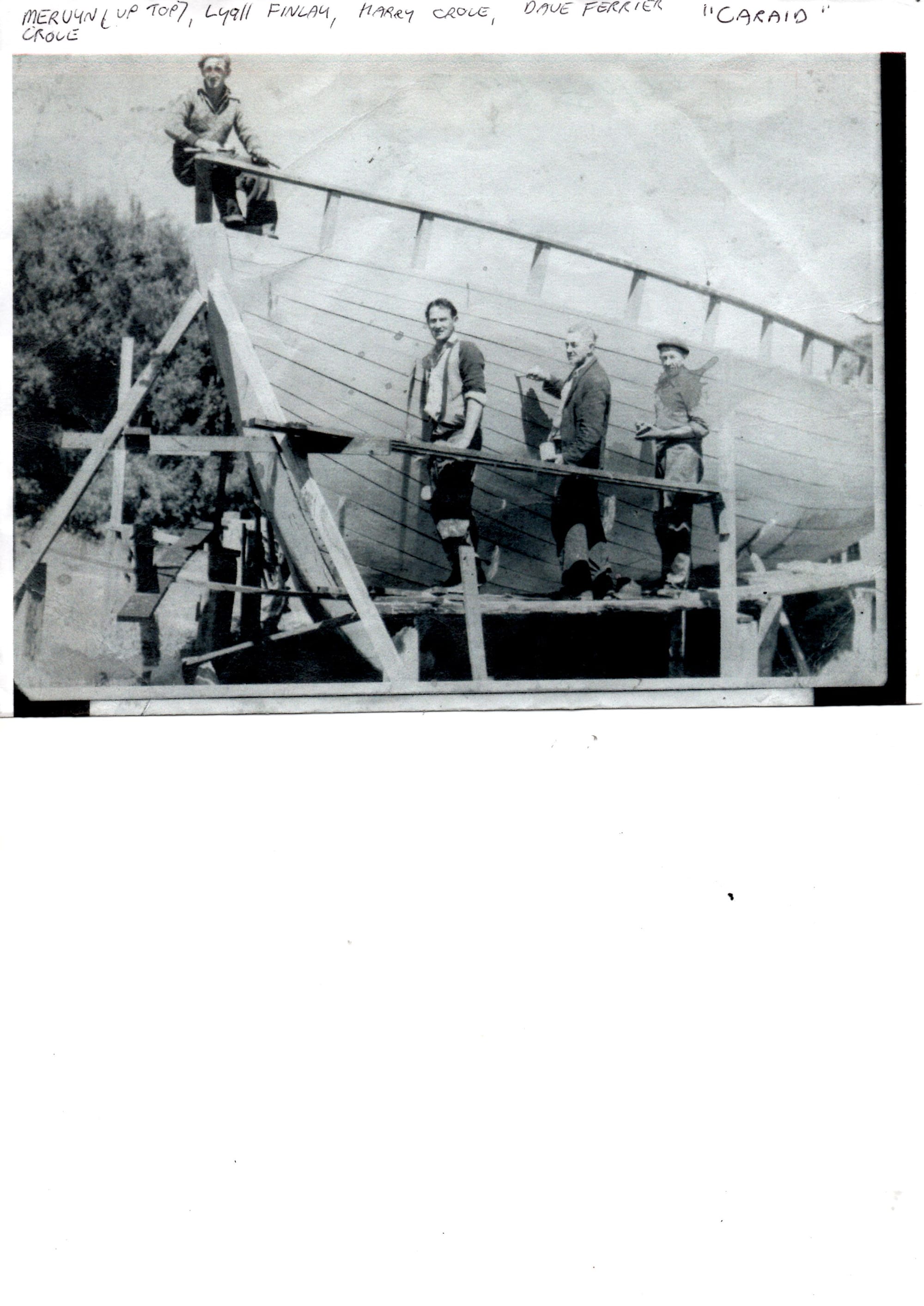
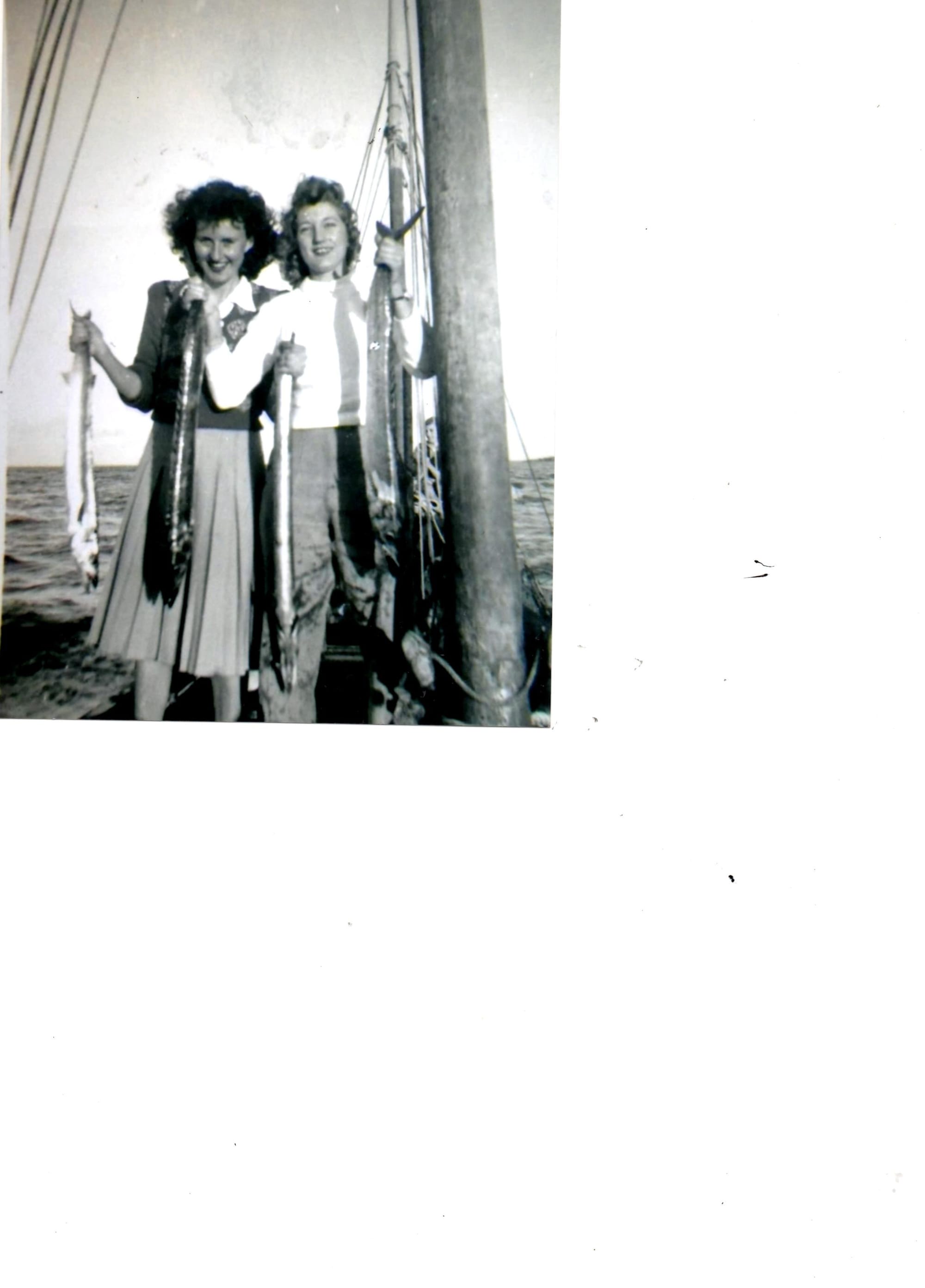
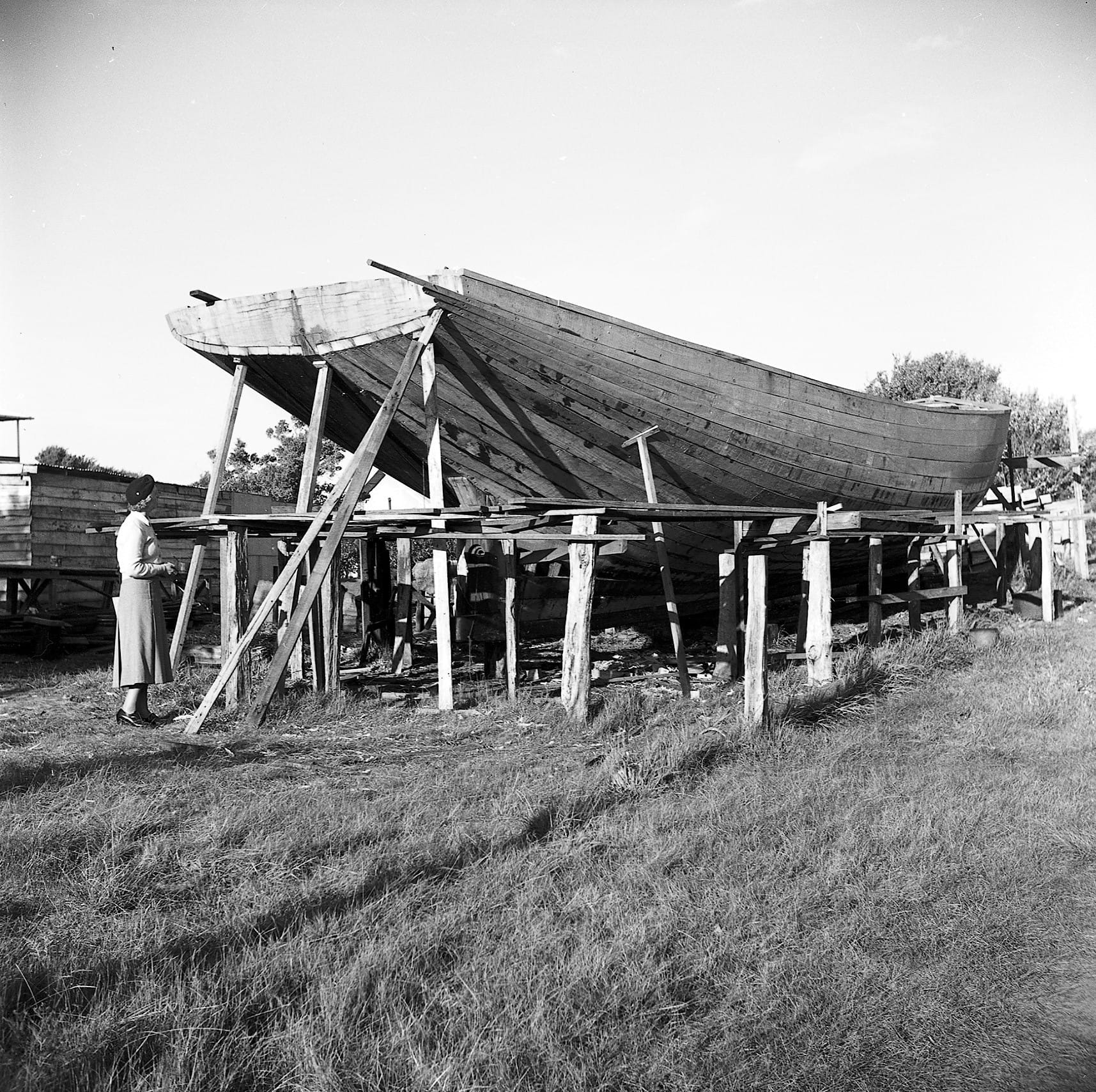
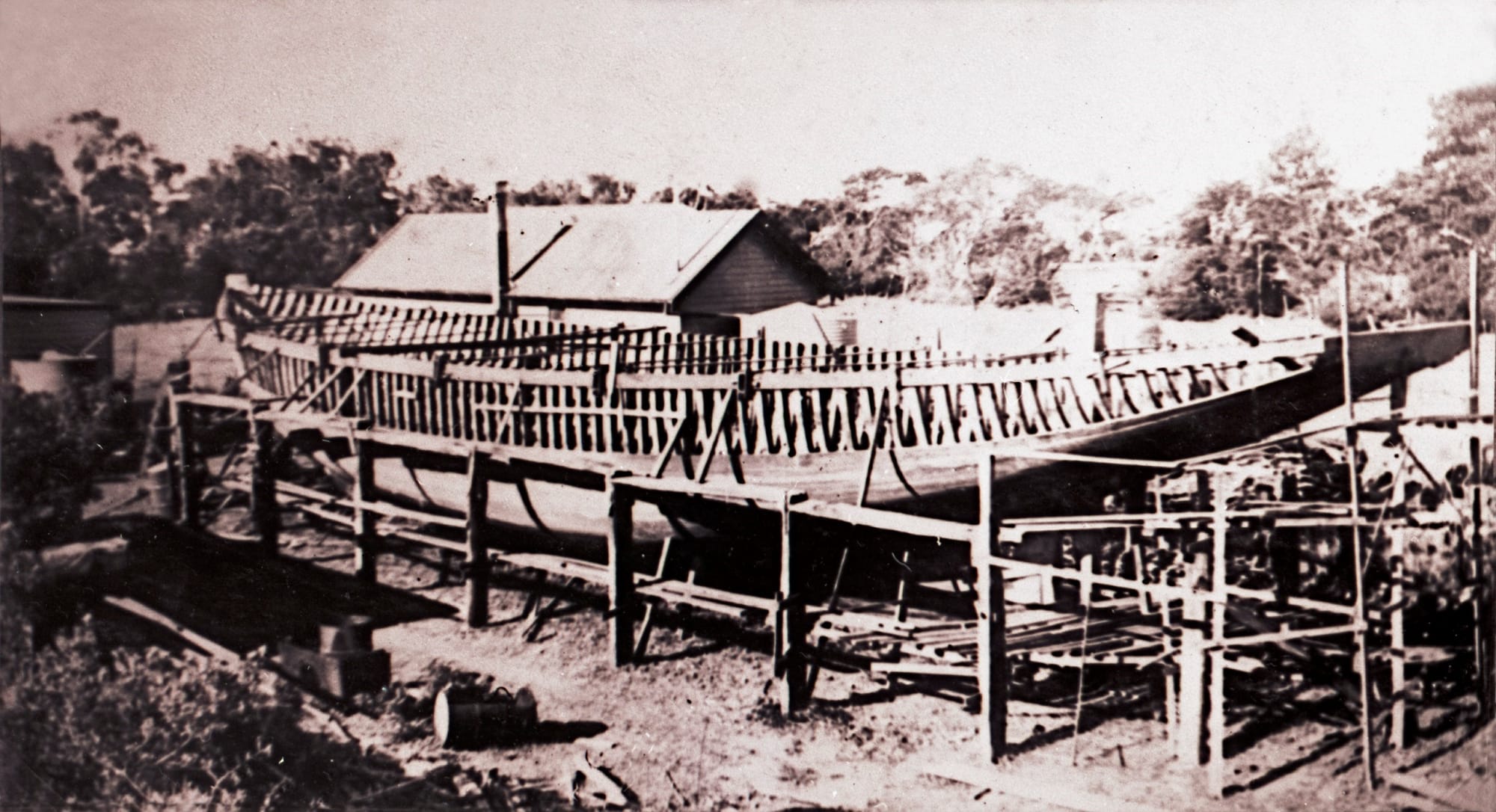
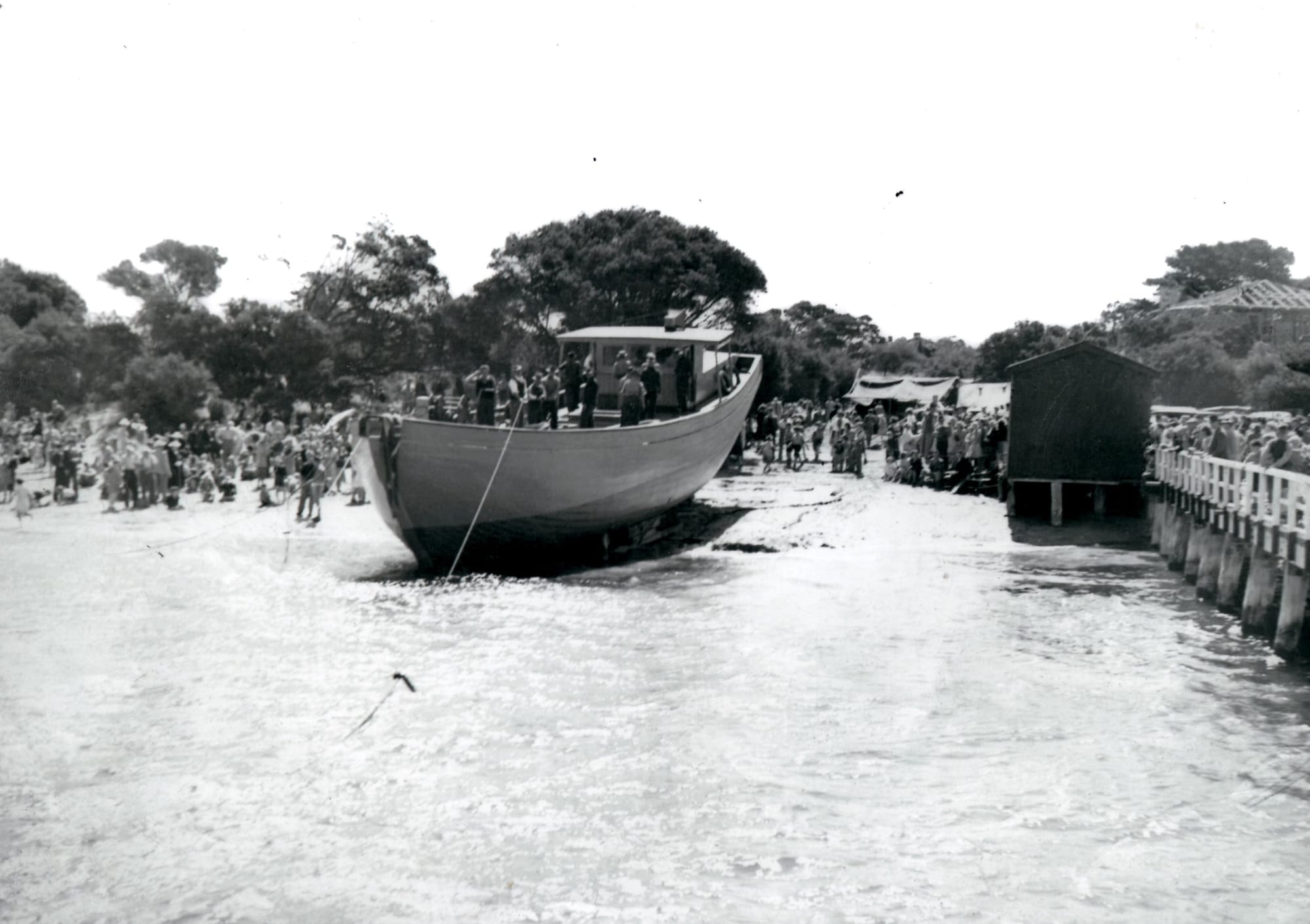
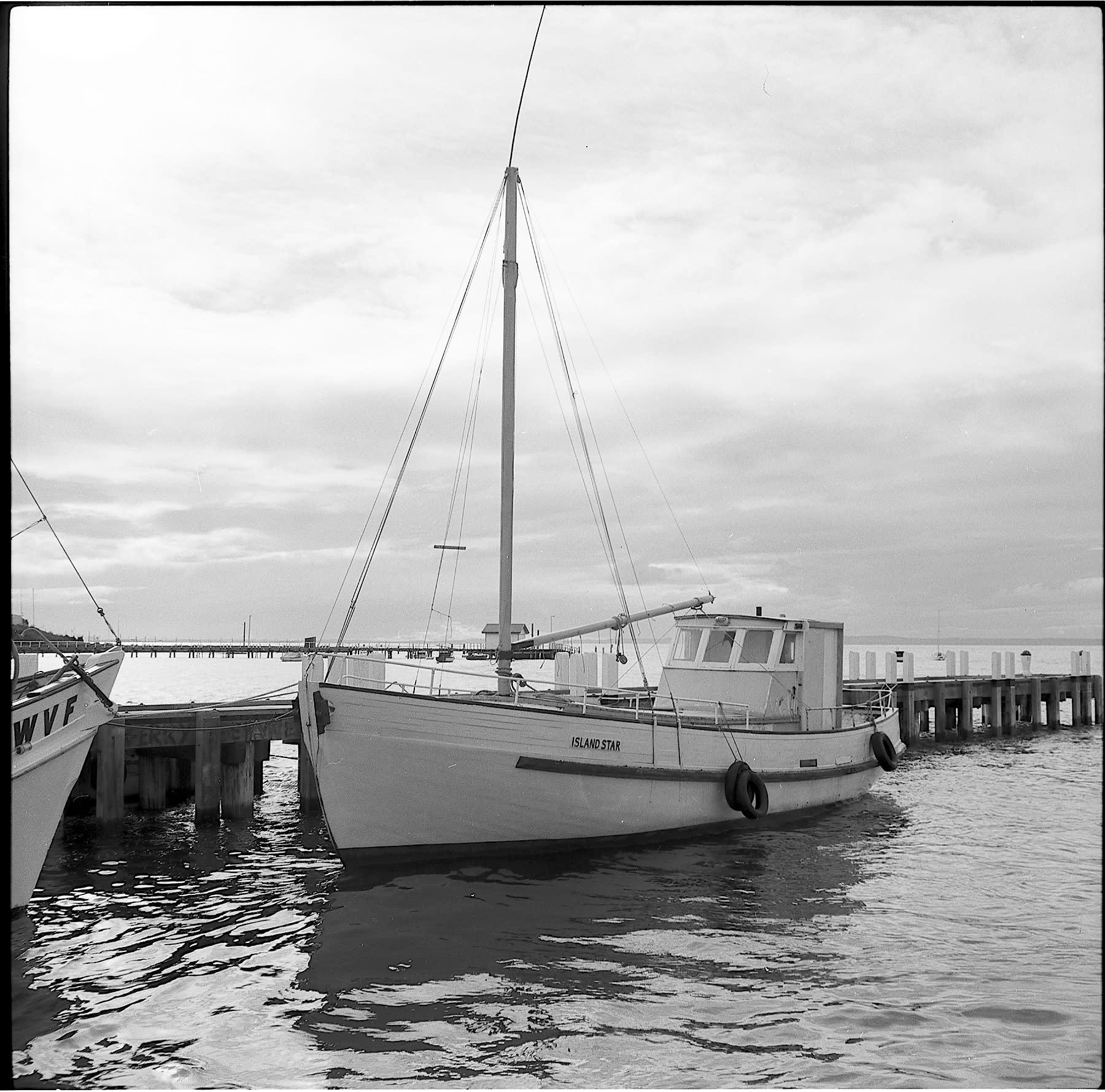
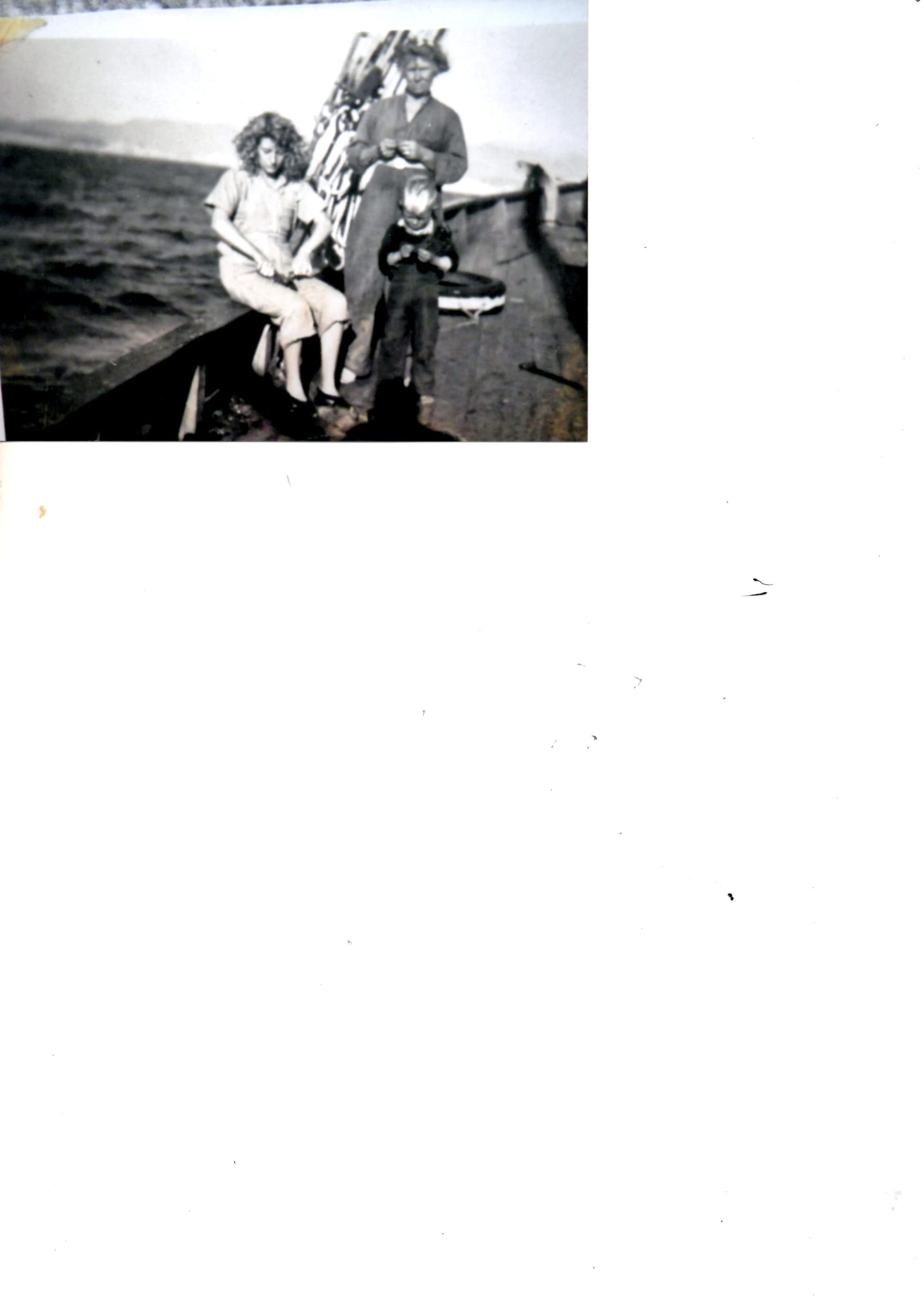
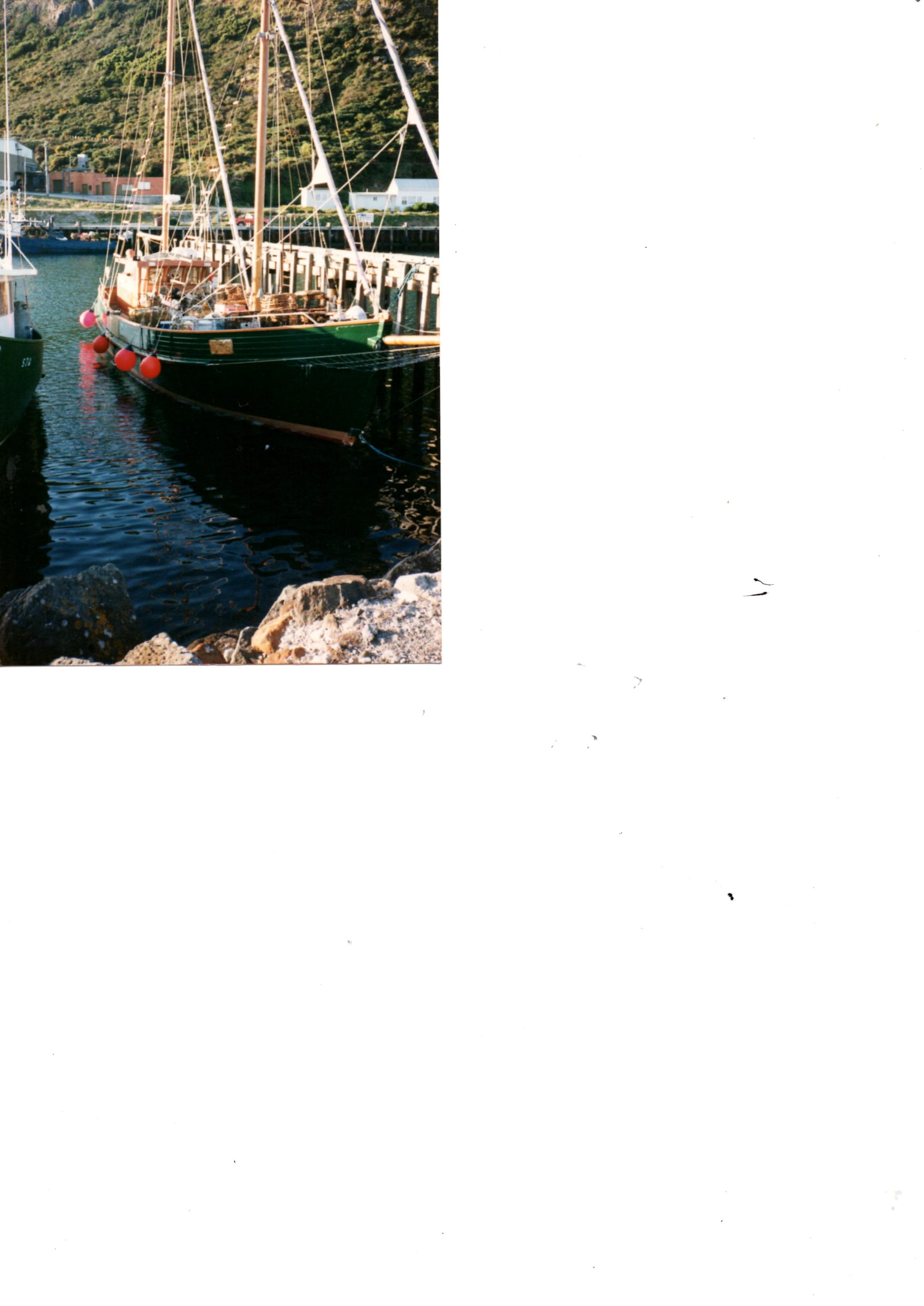
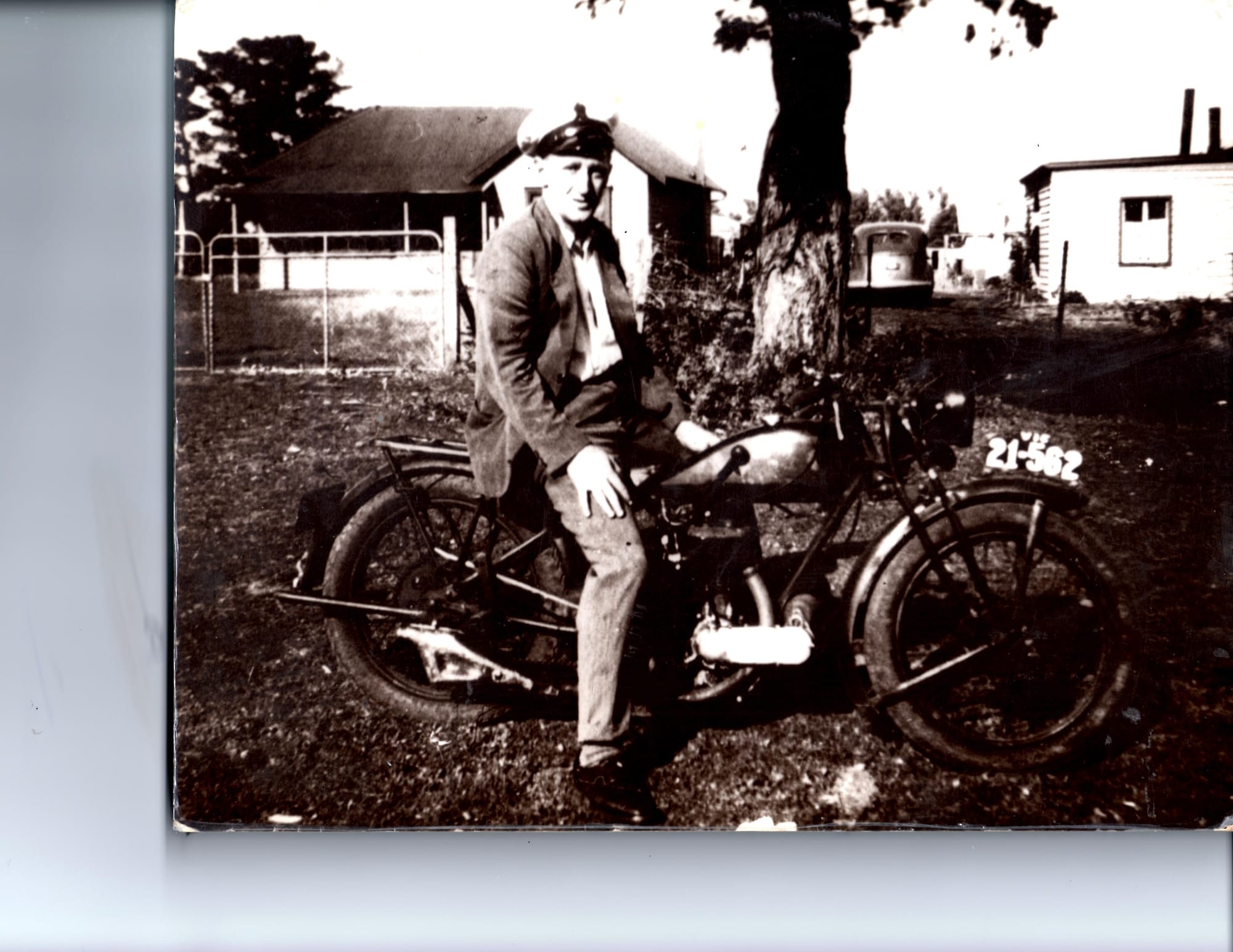
Florrie Crole
Florrie Crole was known as a very brave, kind and courageous woman.
When the Easterly winds blew the Croles would move to a sheltered spot on Great Glennie Island where they also built a liveable hut.
At times the men would take the loaded boats back to San Remo whilst Florrie stayed at the Prom alone with only shearwaters and penguins for company.
She never complained.
Ship building interrupted by war
In 1939 Harry, along with his three sons laid the keel for the 77 foot Aalacrity” meaning ‘speed and eagerness’.
She was built in the yard next to the family home.
Her spoon bow and counter stern identified Alacrity as a very sleek and graceful vessel.
In 1940, after taking nearly two years to construct (no electricity in those days), she was launched at Newhaven next to the jetty.
During World War 2 this sturdy little ship was acquired by the American Navy for duties in the Straits above Australia.
Sadly, she was sunk at “Oro Bay” in the waters of New Guinea, during a Japanese aerial attack which resulted in a serious loss of life.
The Crole boat building industry stopped during WW2 as Vaughan joined the army, Mervyn joined the navy, and Sydney was employed by the Americans to take acquired boats to Sydney and to some of the islands north of Australia.
John Norling, of Rhyll, and Captain Harold Symonds DSC, formerly of Cowes, were also employed with Syd. They were part of the United States Army Small Ships Section and were given the honorary rank of Lieutenant in the Army.
Once the boys returned from the war and were reunited as a family, the boat construction and Bass Strait fishing resumed.
During and after the war, many service men were suffering from malaria, with some dying from this.
Research was stepped up by the authorities to find a cure.
Scientists found that protein from the school shark liver was of great benefit to sufferers.
So Vaughan took over the ‘blue boat’ the Flinders to catch shark for their livers.
These were sent to Aspro Nicholas, in special square tins.
The livers were transported to Aspro by the local fish trucks.
It is believed the local shark catch record from long line hooks was reached during this time; and some believe the record still holds to this day.
Tragedy was to strike the Crole family during this time when eldest son Vaughan lost his life in an accident, whilst transporting a truck loaded with fish to Melbourne.
He left behind his wife Iris and two young children Christine and Peter.
The Stella Maris
The loss of “Alacrity” during WW2 inspired the construction of another large vessel, following the brothers being discharged from war service. The Alacrity’s sister ship “Stella Maris” (‘Star of the Sea’) had her keel laid in 1945.
Timber for the keel was obtained from the Noojee Forest in Gippsland and this massive chunk of wood measured approximately 70 foot long and was 3 x 3 feet square.
Other timbers for the Stella Maris rib frame were acquired from the Cleeland farm in the centre of the Island, opposite Peter Forrest's farm. It had large blue gums on it; and also from Charlie Blackney’s property at the Gurdies.
Harry purchased land from the Cleelands down near the Newhaven jetty, and construction began.
Mervyn, his father Harry, Johnny Farley, Alan Bidgood and numerous other men toiled hard and produced the very sturdy 70 foot Stella Maris.
Long days ensued from dawn to dusk, during which these honest, skilled and hard working men laboured.
They were often heard whistling which indicated the group were a happy team of men.
The vessel was launched on December 29 1946, from the foreshore next to the Newhaven Jetty.
The launch was a prestigious local event with up to 2000 people attending.
It was a very proud time for Harry and his family.
A dedication service was held on board and conducted by Rev G Hall the principal, at the time, of Newhaven’s St Pauls Boys Home.
Two smaller boats the Red Star and the Lady Gay were built around about the same time.
The Croles worked the sturdy Stella Maris for a number of years both fishing and craying whilst she also carried a lot of timber up from Stanley on the north west coast of Tasmania.
She was sold to a fellow named Les Jackson of Flinders Island who renamed her “Prion”.
She subsequently worked, carrying general cargo including cattle out of the seaside townships of Lady Barron on the south side and Whitemark on the south east coast of Flinders Island, to numerous islands in the Furneaux Group.
The Caraid a favourite
Mervyn’s favourite boat built by the Crole family was the gracious double masted “Caraid” which he fished in for many years.
Marie Walker, who holidayed in San Remo, was to become Mervyn’s wife and prior to having children did several trips with him into Bass Strait.
Marie often spoke of a Marie often spoke of a memorable experience……the time a huge whale travelled alongside Caraid for several days.
Caraid is now working in Vanuatu as a passenger charter boat, following a stint fishing out of King Island.
Other smaller boats were constructed over the years with the final boat built in Newhaven being the “Island Star” in around 1958, the year Harry Crole died.
He died out on the bay of a heart attack, after bringing the Eagle Star ferry back to Rhyll on a summer day during which a huge influx of tourists had come to Phillip Island.
Some other wonderful seaman of that era associated with the Crole family were Frank and Wally Croft, Fred and Tom Davis, Colin Woods, Lyle Finley, Jim and Len Bagley, Dave Ferrier, Allan Bidgood and John Bethol among others.
These days there are no members of the Crole family directly associated with commercial fishing.
However a strong passion for the coast and ocean is a common thread amongst Harry’s grandchildren and great grand children
Jess Daff is a surfer at Coffs Harbour. Tim Daff is a keen fisherman and diver, and Chris Daff has a passion for the coast and ocean.
Arthur Farley's two sons John and Willam were to follow him as fishermen, and his daughter Maude married Frank Newman, also a fisherman.
William was accidentally killed by a gunshot while ashore in King Island in 1952.


